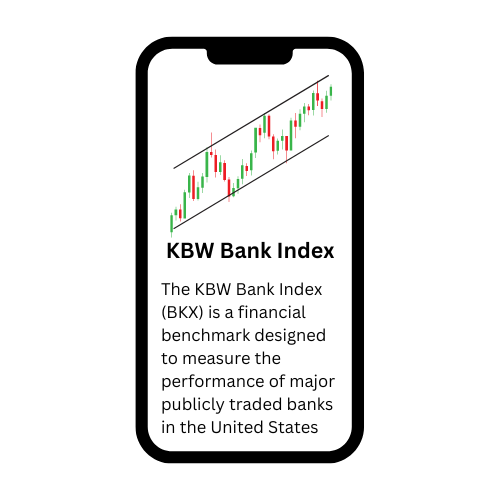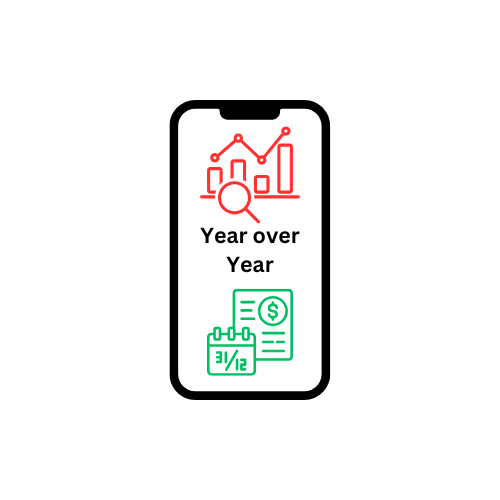The KBW Bank Index, or KBW Bank Index (BKX), is a benchmark index that tracks the performance of leading publicly traded banks in the United States. Created by Keefe, Bruyette & Woods (KBW), a well-regarded investment bank specializing in the financial services sector, the index comprises a selection of large, high-quality banking institutions. It is designed to provide investors with a comprehensive view of the banking industry’s overall performance and health. The KBW Bank Index is widely used by financial professionals and analysts to gauge the sector’s market trends and to make informed investment decisions. Its composition includes major banks, ranging from large national institutions to regional players, reflecting the diverse nature of the banking industry.
What is the KBW Bank Index?
The KBW Bank Index (BKX) is a financial benchmark designed to measure the performance of major publicly traded banks in the United States. Created by Keefe, Bruyette & Woods (KBW), a leading investment bank with expertise in financial services, the index includes a curated selection of large, influential banking institutions. Its purpose is to offer a broad overview of the health and trends within the banking sector. By tracking these key banks, the KBW Bank Index helps investors and analysts assess the overall performance of the banking industry, providing insights into market conditions and sector-specific developments. The index features a mix of large national banks and significant regional players, capturing a diverse cross-section of the industry and reflecting its varied nature.
Components of the KBW Bank Index
The KBW Bank Index (BKX) comprises a selection of key components that represent the broader banking sector. Here are the primary elements:
- Large National Banks: The index includes some of the largest and most prominent banks in the U.S., such as JPMorgan Chase, Bank of America, and Citigroup. These institutions are major players in the global financial market and their performance significantly impacts the index.
- Regional Banks: Alongside national giants, the index features significant regional banks, which provide essential banking services in specific geographical areas. Examples might include PNC Financial Services and Regions Financial Corporation.
- Diversification: The selection encompasses a range of banks with varying business models and market focuses, from consumer banking to investment services. This diversity helps provide a comprehensive view of the sector.
- Market Capitalization: The index components are chosen based on their market capitalization, ensuring that the included banks are influential and substantial in the financial landscape.
- Rebalancing: The index is periodically rebalanced to reflect changes in the banking industry, such as mergers, acquisitions, or shifts in market capitalization, ensuring it remains representative of the current state of the sector.
How the KBW Bank Index is Calculated
The calculation of the KBW Bank Index (BKX) involves several key steps to ensure accurate and representative tracking of the banking sector. Here’s a breakdown of the process:
- Market Capitalization Weighting: The index is weighted based on the market capitalization of its constituent banks. This means that banks with larger market caps have a greater influence on the index’s performance. Market capitalization is calculated by multiplying the stock price by the number of outstanding shares.
- Component Selection: The index includes a pre-determined list of banks selected for their significant impact on the financial industry. The selection criteria are based on factors such as market capitalization, liquidity, and relevance to the banking sector.
- Price Index Calculation: The index is calculated using a price-weighted approach, where the sum of the prices of all constituent stocks is divided by a divisor. This divisor is adjusted periodically to account for changes such as stock splits or changes in index components.
- Periodic Rebalancing: The index is rebalanced at regular intervals (typically quarterly) to reflect changes in market conditions, such as shifts in stock prices, mergers, or changes in the constituent banks. This ensures that the index remains accurate and representative of the current banking sector landscape.
- Divisor Adjustment: The divisor is adjusted during rebalancing or when there are significant changes in the index, such as changes in the list of components or corporate actions like stock splits. This adjustment maintains continuity and consistency in the index’s value.
Significance of the KBW Bank Index
The KBW Bank Index (BKX) holds significant value for investors, analysts, and financial professionals due to several key reasons:
- Sector Benchmarking: The index serves as a benchmark for evaluating the performance of the banking sector. By tracking the performance of major banks, it provides a reference point for comparing individual bank stocks and assessing sector-wide trends.
- Market Sentiment Indicator: The index reflects the overall health and sentiment of the banking industry. Movements in the index can signal broader economic trends, investor confidence, and potential shifts in financial conditions, making it a valuable tool for market analysis.
- Investment Decisions: Investors use the KBW Bank Index to make informed investment decisions. The index’s performance can guide portfolio allocation and help investors identify opportunities or risks within the banking sector.
- Economic Insight: The index offers insights into the economic environment and banking sector dynamics. Since banks are integral to the economy, fluctuations in the index can provide clues about economic cycles, regulatory impacts, and financial stability.
- Sector Exposure: For funds and ETFs focused on the banking sector, the KBW Bank Index serves as a basis for investment strategies and portfolio construction. It helps these funds achieve targeted exposure to the banking industry.
Impact on Financial Markets
The KBW Bank Index (BKX) has a notable impact on financial markets due to several key factors:
- Investor Sentiment: The performance of the KBW Bank Index often reflects investor sentiment towards the banking sector. Sharp movements in the index can influence broader market sentiment, impacting investor confidence and potentially affecting stock prices across various sectors.
- Market Trends: As a benchmark for the banking industry, the index helps identify market trends and shifts. A rising index may indicate a bullish outlook for the banking sector, while a declining index could signal concerns about financial stability or economic conditions.
- Asset Allocation: Institutional investors and fund managers use the KBW Bank Index to guide asset allocation decisions. Changes in the index can lead to rebalancing of portfolios, impacting demand for bank stocks and influencing overall market dynamics.
- Economic Indicators: The index serves as an economic indicator, reflecting the health of the banking sector, which is closely tied to the broader economy. Fluctuations in the index can provide insights into economic cycles, regulatory impacts, and financial stability.
- Market Volatility: Significant changes in the KBW Bank Index can contribute to market volatility. Since banks are central to financial systems, their performance can have ripple effects on other financial instruments and sectors, potentially amplifying market fluctuations.
Investing in KBW Bank Index-Related Products
Investing in KBW Bank Index-related products offers investors various opportunities to gain exposure to the banking sector and capitalize on its performance. Here’s how these investments work:
- Exchange-Traded Funds (ETFs): Many ETFs are designed to track the KBW Bank Index or similar banking sector indices. Investing in these ETFs allows investors to diversify their holdings across a range of major banks and financial institutions, mirroring the index’s performance and reducing individual stock risk.
- Mutual Funds: Some mutual funds are focused on the financial sector and may use the KBW Bank Index as a benchmark or base for their investment strategy. These funds pool capital from multiple investors to invest in a diversified portfolio of banking stocks, offering professional management and diversification.
- Index Funds: Index funds that track the KBW Bank Index offer a passive investment approach, aiming to replicate the index’s performance. These funds are typically low-cost and suitable for investors looking for broad exposure to the banking sector without active management.
- Derivatives: Investors can use derivatives, such as futures and options based on the KBW Bank Index, to speculate on or hedge against movements in the index. These financial instruments allow for leveraged exposure and can be used to implement various trading strategies.
- Structured Products: Some financial institutions offer structured products linked to the KBW Bank Index, such as notes or bonds with returns tied to the index’s performance. These products can provide customized risk and return profiles but may come with additional complexity and risk.
Risks and Considerations
Investing in KBW Bank Index-related products involves several risks and considerations that investors should be aware of:
- Sector-Specific Risk: The KBW Bank Index focuses exclusively on the banking sector, which means investments are heavily influenced by factors affecting banks. Economic downturns, regulatory changes, and credit market fluctuations can significantly impact the performance of banks and, consequently, the index.
- Market Volatility: The banking sector can experience high volatility due to macroeconomic factors, interest rate changes, and market sentiment shifts. This volatility can lead to substantial fluctuations in the value of KBW Bank Index-related products, affecting investment returns.
- Regulatory Risks: Banks are subject to extensive regulation, and changes in financial regulations or compliance requirements can impact their profitability and stock performance. Regulatory uncertainty or new laws can influence the index and related investment products.
- Economic Cycles: The performance of the KBW Bank Index is closely tied to economic cycles. During economic downturns, banks may face higher loan defaults and reduced profitability, which can negatively affect the index. Conversely, economic booms can drive positive performance.
- Interest Rate Risk: Interest rate changes can impact banks’ net interest margins and overall financial performance. Rising or falling interest rates can influence bank earnings and, by extension, the performance of the KBW Bank Index.
Conclusion
In conclusion, the KBW Bank Index offers a valuable benchmark for assessing the performance and health of the U.S. banking sector. By including a diverse range of major and regional banks, it provides a comprehensive snapshot of the industry, influencing investment strategies and market analysis. Investing in products related to the KBW Bank Index, such as ETFs, mutual funds, and index funds, allows investors to gain targeted exposure to the banking sector, potentially benefiting from its performance. However, this investment approach comes with inherent risks, including sector-specific vulnerabilities, market volatility, and regulatory changes. Understanding these risks and considering the associated costs and dynamics of index-tracking products is crucial for making informed investment decisions. Ultimately, the KBW Bank Index serves as both a tool for evaluating sector performance and a guide for navigating the complexities of banking sector investments.








